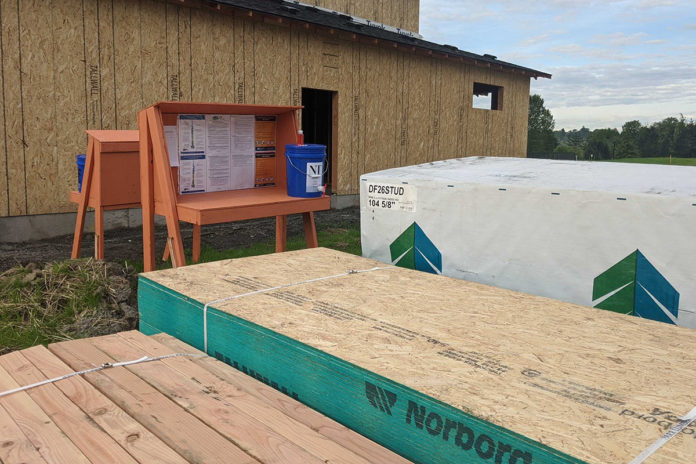
Washington’s construction industry can get back to work, says Gov. Jay Inslee. On April 24, the Governor issued an addendum to Proclamation 20-25 announcing the phased restart to construction work. The restart is effective immediately and is the result of weeks of collaboration among stakeholders of the Construction Roundtable, a working group convened by the Governor to develop safety protocols for the safe resumption of construction work across the state.
The protocols announced by Gov. Inslee are known as the Phase 1 Jobsite Safety Requirements, which must be implemented prior to the resumption of low-risk construction work. Low-risk work is characterized by tasks that the state feels confident can be performed while maintaining social distancing and associated safety measures. Initially, the restart only applies to existing projects that were stopped as a result of the Governor’s initial stop-work order. However, jurisdictions should continue to process new building permits. Although jurisdictions may not need to issue the newly approved building permits until the Governor clarifies the scope of the restart as part of the second phase, projects that have yet to break ground can continue to move forward.
So, what does this mean for your ongoing projects? First, the Phase 1 Jobsite Safety Requirements mandate that each project must develop its own comprehensive jobsite safety plan for COVID-19 exposure control, mitigation and response procedure. This safety plan is in addition to your existing Accident Prevention Plan and addresses your company and workers’ responsibilities to keep yourselves and our communities safe. Your plan must implement 30 safety requirements, including appointing a site-specific COVID-19 supervisor to monitor the health of employees and enforce the safety plan, mandatory safety training conducted in the form of a safety stand-down or toolbox talk, specific social distancing measures, provision of personal protective equipment (PPE) to employees, enhanced sanitation and cleanliness practices, records of jobsite visitors, and development of an oversight and remediation program for workers who display COVID-19 symptoms.
The key component of your safety plan should be enacting social distancing measures on the worksite. These include clear posting of COVID-19 safety requirements on the jobsite, maintaining six feet of separation between workers at all times, staggering breaks in shifts, identification and remediation of “choke points” and “high-risk areas” on jobsites where workers typically congregate, and, if possible, allowing only one trade/subcontractor at a time on the jobsite.
Second, once your comprehensive jobsite safety plan has been implemented and work has resumed, work must be limited to low-risk activities. Trades and activities that require two or more workers to be in close proximity are not permitted under the Phase 1 restart. If physical distancing on the jobsite is not possible, then that particular project cannot move forward at this time. Businesses should develop job hazard analyses (JHAs) related to each activity for each trade to determine whether work can resume in compliance with the Phase 1 Jobsite Safety Requirements.
Err on the side of caution when making the decision as to whether work can safely resume. Failure to comply with the Phase 1 Jobsite Safety Requirements may subject your business to liability, including but not limited to, a jobsite being shut down, safety fines, loss of license and an enforcement action by The Department of Labor & Industries’ Division of Occupational Safety and Health (DOSH).
Many jurisdictions are integrating the addendum to Proclamation 20-25 into jurisdiction-specific orders. Work in the city of Battle Ground can resume for subdivisions that have already undergone permitted grading construction, so long as the state-required COVID-19 documentation is posted on site. The city of Ridgefield has also released its own city-specific order. Not all jurisdictions have interpreted the Phase 1 restart in such detail, instead choosing to rely on stock language of the Governor’s addendum to Proclamation 20-25. Before resuming work, you should ensure your project complies with all jurisdiction-specific orders, in addition to the Phase 1 Jobsite Safety Requirements.
Finally, there is some good news for projects and activities that require work to be performed less than six feet apart. These projects will likely be authorized as part of Phase 2. In the meantime, companies can be proactive in preparing for the Phase 2 rollout and ensuring their businesses are best positioned to resume work immediately upon the announcement of the Phase 2 restart.
Keenan Ordon-Bakalian is an attorney in the Jordan Ramis PC land use and development practice group. Contact him at Keenan.ordon-bakalian@jordanramis.com.
The information contained in this article is for the general interest of the reader and should not be regarded as legal advice. If you have questions, or to obtain more information on this topic, please contact an attorney in our land use and development practice group.



